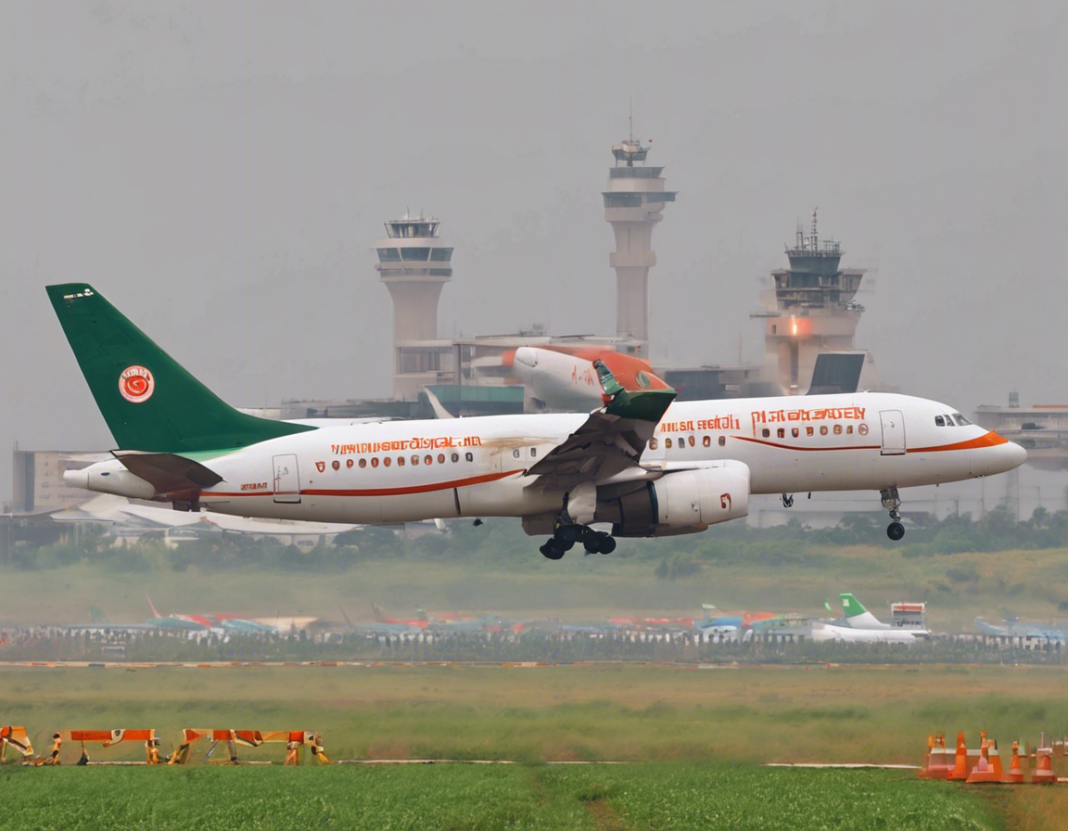On a sunny afternoon in Bangalore, India, a routine flight from Mumbai to Chennai took a terrifying turn when the pilots discovered a critical issue with the plane’s landing gear. As panic ensued among the passengers, the highly skilled pilot took decisive action and safely executed an emergency landing at the Hindustan Aeronautics Limited (HAL) Airport, saving all onboard.
The Critical Moment
In the midst of the flight, as the aircraft descended in preparation for landing, the pilots realized that the landing gear was malfunctioning. This crucial component, which is essential for a safe landing, had failed to deploy properly. With limited time and high stakes, the flight crew quickly assessed the situation and initiated emergency protocols.
The Pilot’s Expertise
The hero of this story is undoubtedly the pilot, whose years of training and experience came to the forefront in this crisis. With nerves of steel, the pilot calmly communicated the situation to the air traffic control tower at HAL Airport and meticulously planned the emergency landing. Despite the immense pressure and stress, the pilot maintained composure and focus, guiding the aircraft towards the runway with precision and skill.
The Crew’s Coordination
While the pilot played a pivotal role in ensuring a safe landing, the entire flight crew deserves recognition for their coordinated efforts. The cabin crew swiftly secured the cabin, briefed the passengers on safety procedures, and assisted in preparing for the emergency landing. Their professionalism and teamwork were instrumental in maintaining order and calmness during a challenging situation.
The Passengers’ Resilience
Amidst the chaos and uncertainty, the passengers onboard the flight displayed remarkable resilience and courage. Despite the fear and anxiety that gripped the cabin, the passengers followed the instructions of the crew and remained composed throughout the ordeal. Their cooperation and trust in the expertise of the pilot and crew were crucial in ensuring a successful outcome.
The Outcome: A Miracle on the Runway
As the crippled aircraft descended towards the runway at HAL Airport, a collective hush fell over the passengers and crew. The tension was palpable as everyone braced for impact, hoping and praying for a safe landing. In a heart-stopping moment, the aircraft touched down smoothly, with the pilot skillfully using alternative methods to cushion the landing without the functioning landing gear.
Lessons Learned: Preparedness and Vigilance
The incident at HAL Airport serves as a poignant reminder of the importance of emergency preparedness and vigilance in the aviation industry. From rigorous training for pilots and crew members to stringent safety protocols and regular maintenance checks for aircraft, every aspect of aviation operations plays a critical role in ensuring the safety of passengers and crew.
Gratitude and Reflection
In the aftermath of the emergency landing at HAL Airport, gratitude abounds for the pilot, crew, and ground staff who worked together to avert a potential disaster. The incident serves as a sobering reminder of the fragility of life and the importance of valuing each moment. As the passengers and crew disembarked from the aircraft, embraces were shared, tears were shed, and a newfound appreciation for the precious gift of life filled the air.
Frequently Asked Questions (FAQs)
-
What are the common causes of landing gear malfunctions?
Landing gear malfunctions can occur due to issues such as hydraulic failure, electrical problems, mechanical failures, or human error during maintenance or operation. -
How do pilots train for emergency landings?
Pilots undergo rigorous training in simulators to practice emergency procedures, including landing gear failures, engine failures, and other critical situations. -
What role does air traffic control play in emergency landings?
Air traffic control provides crucial guidance and support to pilots during emergency situations, assisting in coordinating the landing and ensuring the safety of the aircraft. -
Are emergency landings common in commercial aviation?
While emergency landings are relatively rare in commercial aviation, pilots and crew members are trained to handle such situations with professionalism and expertise. -
What should passengers do during an emergency landing?
Passengers should listen carefully to the instructions provided by the crew, follow safety procedures, remain calm, and prepare for impact by assuming the recommended brace position. -
How do airlines prioritize safety in their operations?
Airlines prioritize safety through rigorous training programs, regular maintenance checks, adherence to strict safety protocols, and a culture of continuous improvement and learning. -
What support is offered to passengers and crew after an emergency landing?
Airlines typically provide support services to passengers and crew members after an emergency landing, including counseling, rebooking on alternative flights, and assistance with any immediate needs. -
Can landing gear malfunctions be detected before takeoff?
Landing gear malfunctions can sometimes be detected during pre-flight inspections or through onboard diagnostic systems, allowing for timely repairs or maintenance actions. -
What are the key characteristics of a successful emergency landing?
A successful emergency landing is characterized by quick decision-making, precise execution, effective communication, cooperation among the crew, and a focus on the safety and well-being of all onboard. -
How can passengers overcome fear during emergency situations on a flight?
Passengers can overcome fear by staying informed, following instructions from the crew, focusing on their breathing, practicing relaxation techniques, and trusting in the expertise of the flight crew.
In conclusion, the emergency landing at HAL Airport stands as a testament to the courage, skill, and professionalism of the aviation professionals involved. It serves as a powerful reminder of the importance of preparedness, teamwork, and resilience in the face of adversity. As the aircraft is cleared for repairs and the passengers continue their journeys, the remarkable events of that fateful day will be etched in their memories forever.

